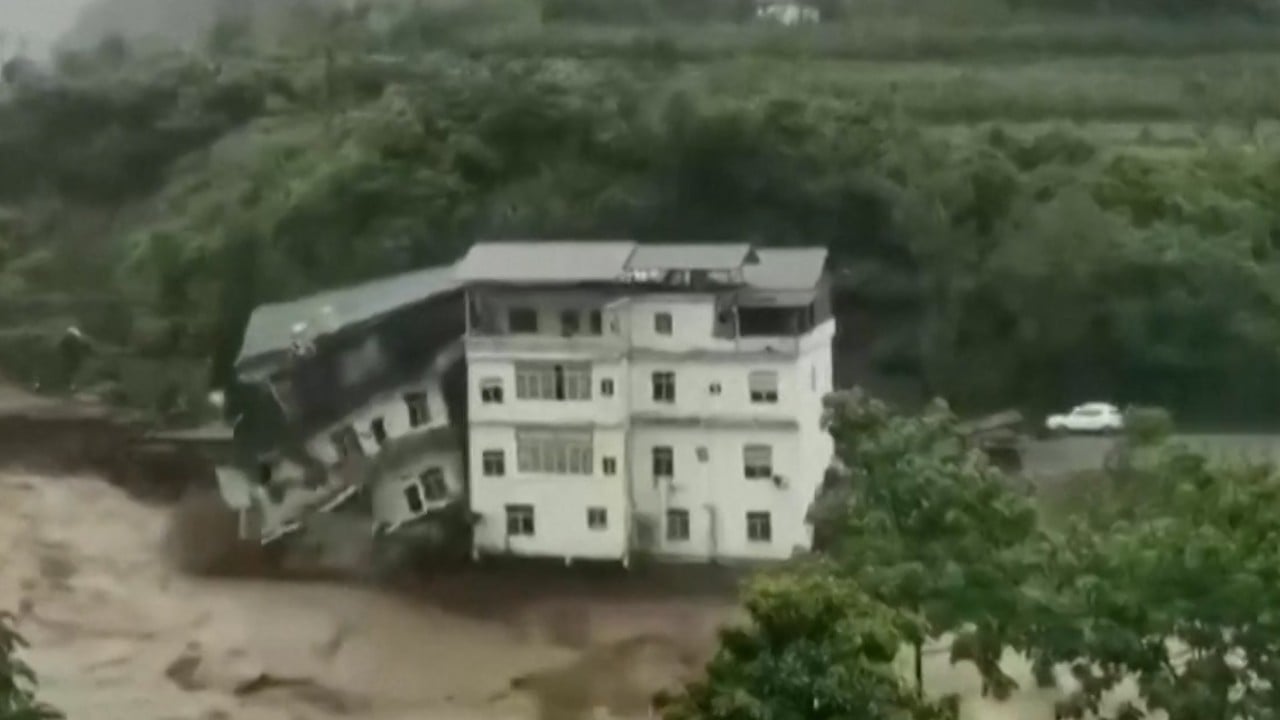
Explainer | Climate change: what does El Nino mean for global energy, trade and agriculture? And where does China stand?
- The hottest week and hottest June on record have added to the climate change debate, with temperatures also rising in China
- Floods and droughts are also creating problems for the global economy, especially for trade, agriculture and energy
The earth just experienced the hottest week on record, with last month also the hottest June on record, according to the World Meteorological Organisation (WMO).
With the further development of the El Nino climate pattern, future weather is likely to be even hotter, according to WMO, who announced the official formation of the phenomenon earlier this month.
China has also experienced the largest number of hot days so far this year since 1961, the National Climate Centre said, who predict that temperatures in most parts of the country are likely to be higher in July.
With the arrival of the summer rainy season, China will see regional floods, droughts, high temperatures and heatwaves, and the Ministry of Water Resources has urged local governments to provide early warnings for their citizens.
Earlier this month, the southwestern Chinese municipality of Chongqing experienced the heaviest rainfall since meteorological records began in 1956, triggering landslides and other secondary disasters.
The likes of India, Germany, Spain, Vietnam and Thailand are also reporting extreme weather, creating more uncertainty for the global economy.
How could extreme weather impact electricity supplies?
High temperatures tend to lead to weak wind power generation and a higher probability of generators experiencing failures as more electricity is needed to combat the heat, the China Electricity Council (CEC) said, according to The Paper earlier this month.
The council estimated that China’s highest national electricity load in 2023 would be around 1.37 billion kilowatts, an increase of 80 million kW from last year.
If the widespread extreme weather continues, the load increase will rise to 100 million kW, according to the CEC.
The growth rate of power generation in Yunnan province, a major hydropower producing region, had slumped by 20.8 per cent in the first five months of 2023, according to CEC.
Drought, summer heat test China’s economic recovery as power producer sizzles
Earlier this month, China Southern Power Grid reported record-breaking power loads in all five southern provinces, which may experience power crunches during peak hours.
In Shandong province, a major industrial region in eastern China, electricity loads reached 80 per cent of the forecast maximum in the 10 days that ended July 9, according to a report on the provincial TV station.
Vietnam’s northern region experienced power supply constraints from mid-May, and the country’s government mitigated the tension by cutting back on public lighting, Reuters reported in early June.
The Electricity Regulatory Authority of Vietnam said that a total of 11,000 enterprises had agreed to cut their power consumption, including China’s Texhong Textile Group and South Korean shoemaker Changshin.
The US Energy Information Administration warned two-thirds of North America could face electricity shortages when temperatures spike this summer, citing an analysis by the non-profit North American Electric Reliability Corporation.
What about trade?
Water in Germany’s Rhine river will fall to its lowest level this summer, with the level in the town of Kaub, an important waypoint located west of Frankfurt, now at its lowest level in at least 30 years, according to German federal data.
The river had already seen its lowest water level last year, when the gradually drying waterway pushed up shipping prices, affecting the transport of bulk commodities vital for industrial use, including coal and diesel.
Water levels at Kaub were measured at between 100cm (3.2 feet) and 125cm on July 10, down from around 350cm in May, the official website showed.
The low water situation is an exceptional and unforeseeable situation that is beyond our control and cannot be predicted
“Water levels below 135cm mean that a large container ship usually has to reduce its [load] to approximately 50 per cent,” said Deutsche Bank in a report released last month.
Container shipping giant Maersk published a low-water surcharge schedule earlier this month, saying that the cost of fully loaded ships would rise given the current low water levels on the Rhine.
“The low water situation is an exceptional and unforeseeable situation that is beyond our control and cannot be predicted, neither the severity nor the duration,” Maersk said in an online statement.
And what about the impact of extreme weather on agriculture?
In the first half of the year, natural disasters in China affected 4.7 million hectares (11.6 million acres) of agricultural land, of which 214,000 hectares were out of harvest, and direct economic losses of 38.23 billion yuan (US$5.3 billion), according to the Ministry of Emergency Management earlier this month.
Since late June, farmland has experienced accelerated soil moisture loss and drought has appeared in some areas due to persistent hot weather in northern China, the Ministry of Agriculture and Rural Affairs (MARA) said earlier this month.
The ministry said the hot weather at the start of July would lead to difficulties for seedlings or the growth of some summer-sown crops and weak spring-sown crop growth, posing serious challenges to autumn grain production this year.
Climate extremes entail specific risks for the agriculture sector
Germany’s largest agricultural association, Der Deutsche Bauernverband (DBV), expects this year’s grain production to be 40.9 million tonnes, far below the 2018-22 average of 42.2 million tonnes and 6 per cent lower than the previous year’s output of 43.6 million tonnes.
DBV said earlier this month that German agriculture is already feeling the impact of climate change, and an increase in extreme weather – including drought – is leading to lower yields.
“Climate extremes entail specific risks for the agriculture sector: higher interannual variability of yield, higher risk of simultaneous yield failure, and supply chain disruptions subsequently leading to market disruptions,” said research by the European Parliament released in April.
The European Union said that drought accounted for more than 60 per cent of the losses in its agricultural sector, amounting to around €5 billion (US$5.6 billion) per year, which will increase in the future due to climate change.
The parliament added that historical damage from heatwaves reached between 0.3 and 0.5 per cent of the total European economy, but this is expected to increase fivefold by 2060.
The economic cost of drought for Europe’s agriculture sector stood at around €4.8 billion in 2015 and might reach €28.6 billion by 2100 under “pessimistic scenarios”, according to the European Parliament research.
A recent study published by the AXA Climate team – an affiliate of the AXA insurance company – in June said maize production may fall by 25 per cent and white sugar production from domestic sugar beet may fall by a quarter in France in 2050 due to climate change.
By 2050, half of all fruit production in France could be affected by extreme climate, including droughts, floods and storms, which is twice as high as usual, it added.
The United States Department of Agriculture said at the end of last month that due to drought in more than 50 per cent of the main US soybean-producing areas, the planting area has fallen 4 million acres from initial expectations, leading to an increase in the price of American soybeans.





